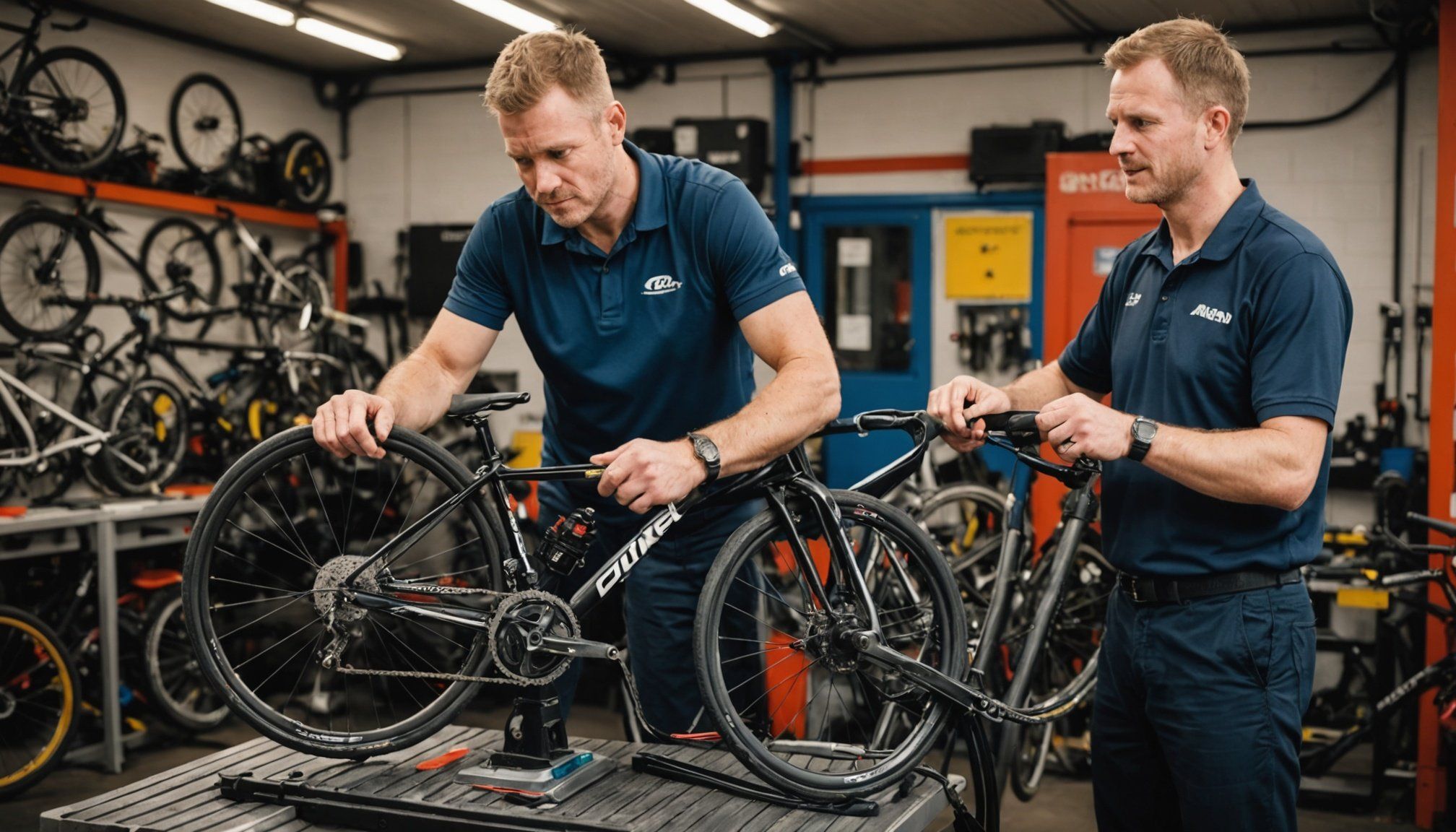Maintaining your bike is crucial for ensuring its longevity and performance, particularly in the challenging weather and terrain of the UK. Regular service not only enhances your riding experience but also ensures your safety on the road or trails. This article aims to provide you with a comprehensive guide on how often you should service your bike to achieve optimal performance under UK conditions.
Understanding the Importance of Regular Bike Servicing
Regular bike servicing is essential for several reasons. Firstly, wear and tear occurs naturally over time, especially if you ride frequently or in adverse weather conditions. The UK is known for its unpredictable weather, which can lead to rust, grime, and other issues that degrade bike components. Secondly, routine maintenance helps identify potential problems before they escalate, saving you money and ensuring your bike is always ready for a ride.
Also to see : What are the nutritional needs of a cyclist training for a race in the UK?
When you engage in regular servicing, you can expect improvements across various components of your bike. This includes the gears, brakes, tires, and overall frame integrity. A well-maintained bike performs more efficiently, providing a smoother ride and better handling. Moreover, it drastically reduces the chances of mechanical failures that could leave you stranded or cause accidents.
From a practical standpoint, understanding how often to service your bike can seem daunting. However, considering factors such as your riding frequency, the conditions you encounter, and your bike type can simplify this decision. Ultimately, regular servicing not only prolongs the life of your bike but also enhances your enjoyment of cycling.
Also read : What are the essential skills every beginner cyclist in the UK should master?
Service Frequency Based on Riding Conditions
The frequency of bike servicing largely depends on your riding conditions. In the UK, where rain and mud are common, your bike will require more attention than it would in drier climates. If you ride your bike daily, especially in challenging conditions, you should aim for a full service every 6-8 weeks.
For recreational riders who enjoy weekend excursions, servicing every 3-6 months may suffice. This schedule allows you to address common issues such as brake wear and tire pressure without overwhelming your maintenance routine. If you predominantly ride on roads, you might get away with fewer sessions, but keep an eye on your brake pads and tire tread.
Additionally, the type of bike you ride matters. Mountain bikes, which face harsher terrains, generally need more frequent servicing than road bikes. The shocks, gears, and brakes on a mountain bike can quickly gather dirt and require more regular checks and cleaning. Conversely, a commuter bike may need less immediate attention but still benefits from a consistent service routine to ensure it remains reliable for your daily journeys.
Ultimately, by assessing your riding habits and environment, you can determine an appropriate service schedule that keeps your bike performing at its best.
Key Components to Check During a Service
During each service, there are several key components that you should inspect thoroughly. This includes checking the brakes, gears, tires, and the bike’s frame. Each part plays a crucial role in overall performance and safety.
Brakes are paramount. Ensure that both the front and rear brakes function smoothly and effectively. Check for wear on the brake pads and make adjustments or replacements as needed. Poorly functioning brakes can compromise your ability to stop, especially on wet or steep descents.
Next, inspect the gears. A well-tuned gear system allows for smooth shifting, essential for navigating various terrains and inclines. Misaligned gears can make cycling cumbersome and lead to excessive wear on the chain and sprockets. Regularly lubricating the chain is critical to prevent rust and ensure smooth operation.
Another notable component is the tires. Regularly check for adequate tire pressure and wear. Under-inflated tires can lead to poor handling and increased risk of punctures. Additionally, examine the tread depth and look for any signs of damage or uneven wear.
Finally, don’t neglect the bike’s frame. Look for any cracks or signs of fatigue, especially if you’ve been riding on rough terrain. A damaged frame can be dangerous, so addressing any issues promptly is essential. By focusing on these key components during your servicing, you ensure a safer, more enjoyable ride.
DIY Maintenance vs. Professional Servicing
When it comes to bike maintenance, you may find yourself weighing the options between DIY servicing and seeking professional help. Doing some maintenance tasks yourself can be beneficial and cost-effective, particularly for basic upkeep.
Simple tasks such as cleaning the bike, checking tire pressure, and lubricating the chain can easily be done at home. Familiarizing yourself with your bike’s components and performing preventive maintenance will not only save you money but also help you develop a deeper understanding of how your bike operates.
However, there are instances when professional servicing is warranted. If you notice significant issues that you cannot diagnose, or if it’s time for a major service (like replacing cables or overhauling the brakes), turning to a professional is often the most prudent choice. Not only do bike mechanics have the expertise to handle complex problems, but they also have the right tools to ensure everything is done correctly.
In the UK, many bike shops offer various servicing packages tailored to different needs, from basic inspections to full overhauls. Regular professional servicing can be particularly beneficial if you ride frequently and rely on your bike for commuting or fitness. Balancing DIY maintenance with professional support will create an effective strategy for keeping your bike in optimal condition.
Creating a Maintenance Schedule
To keep your bike operating smoothly, establishing a maintenance schedule is imperative. This schedule will enable you to track when services are due and what tasks need to be completed. Start by noting down how often you ride and the conditions in which you ride. Using this information, outline a plan that includes both regular checks and professional services.
For example, you might choose to perform basic maintenance tasks weekly, such as checking tire pressure, cleaning the chain, and lubricating gears. You can then schedule a more thorough monthly check, inspecting brakes, tires, and frame integrity.
Every six months, consider taking your bike to a professional for a comprehensive service. This service should include a full inspection of all components and any necessary replacements. Additionally, document any issues you encounter in between services. This practice not only keeps you organized but also helps you identify patterns, such as recurring problems that may need special attention.
Finally, be flexible with your schedule. If you find yourself riding more in certain seasons or facing particularly tough conditions, adjust your maintenance routine accordingly. By committing to a structured maintenance schedule, you can ensure your bike remains in top shape, ready for any adventure that awaits.
In conclusion, maintaining your bike for optimal performance in UK conditions is an essential task that should not be overlooked. Regular servicing, understanding the unique demands of your riding style, and knowing when to seek professional help are all critical factors in ensuring your bike remains reliable and enjoyable to ride. By implementing a thoughtful maintenance schedule, you can address potential issues before they become significant problems, allowing you to fully enjoy the freedom that biking offers.
Ultimately, whether you ride for commuting, leisure, or sport, investing time into your bike’s upkeep will pay off in terms of safety, performance, and longevity. So gear up, stay proactive, and keep pedaling confidently through the diverse landscapes of the UK.











